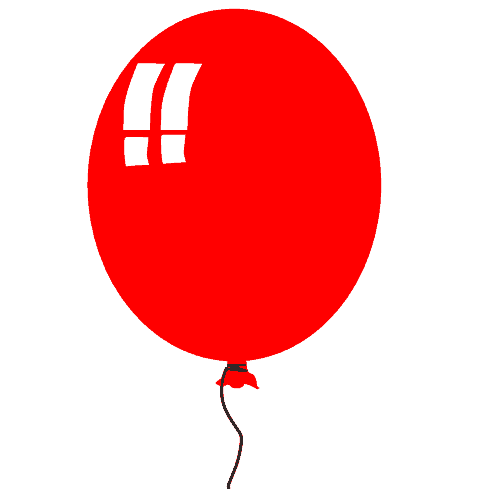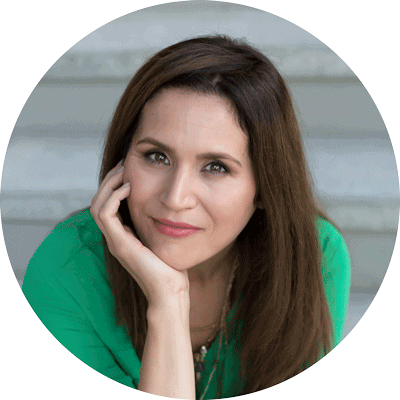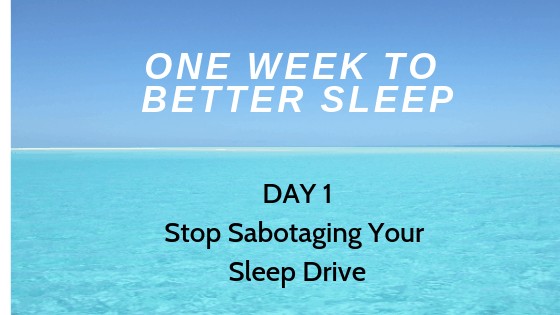In this series One Week to Better Sleep, I’m going to share with you 7 ways in 7 days that you can improve your sleep.
Fixing insomnia is like repairing a woven blanket. You’ve got to identify where the gaps are, where the threads are coming loose, and weave several different threads together to fill the hole. Each thread reinforces other threads to create that tight knit woven blanket. It’s usually not just one thread that’s the problem.
For example, your caffeine consumption could be one behavior that is impacting your sleep. However, it’s unlikely that just focusing on caffeine is going to be the solution to your insomnia.
In this blogging series, I’m going to discuss some of the biggest “broken threads” or culprits of insomnia.
This is day 1: Stop Sabotaging Your Sleep Drive!

Understanding Your Sleep Drive
I’m going to start with some potentially boring information but I promise you that it’ll be brief and it’s useful.
In order to begin to sleep better, we need to understand the factors that go in to sleep regulation. There are two biological processes that go into sleep. Your sleep drive, which will be discussed in this post and your circadian rhythm (or biological clock) which will be discussed in the next post.

The Sleep Drive
You can think of your sleep drive like your hunger drive. The longer it’s been since you’ve eaten, the hungrier you are and the more you might eat at the next meal. If you’ve been snacking all afternoon, you may not really feel like eating much at dinner, unless you have a bottomless pit for chips and queso… (but I digress).
The same general rules apply to your sleep drive. The longer it’s been since you’ve slept or rested, the sleepier you will be. You will have a greater biological NEED for sleep. People with insomnia often don’t feel sleepy.They may feel fatigued and tired, but not necessarily sleepy. More on why that might be in a bit.
The Sleep Balloon
You can imagine your sleep drive like a balloon, your sleep balloon.
As you are awake during the day, your balloon gets filled with air. The more energy you expend, the more air is getting pumped into your balloon. The longer you stay awake, the bigger your balloon gets.

The moment you rest or fall asleep, air begins rapidly escaping from your balloon. Weeeeeeeeeee….. And your precious sleep drive is depleted.
If your balloon is not large and full of air, you may not have enough air to help you fall asleep, or stay asleep. People who have very active minds, sleep related worry or anxiety, or feel “wired” at bed, may need an especially full balloon.
You may be saying to yourself, but I’ve got insomnia! I’m hardly sleeping! How in the world could my balloon not be ready to burst from all the air in it?! Yet I can’t sleep! I hear ya!
Leaky Balloons
There are some sneaky ways that air leaks out of your balloon other than just sleeping. Here are some behaviors that can weaken your sleep drive:
- Napping
- Drinking Caffeine or taking stimulants
- Lying in bed trying to sleep (even if you aren’t sleeping)
- Going to bed earlier in hopes you can get extra sleep
- Going to bed before you’re sleepy
- Sleeping in to “catch up” on lost sleep
- Lying in bed in the morning hoping to sleep, even if you can’t fall back asleep
- Sedentary lifestyle (skipping out on your regular exercise routine because you are too tired, skipping out on social or work obligations because you are too tired)
So “air” may be escaping, unknowingly to you, exacerbating your problems with sleep. Take a moment to assess your sleep drive.
Assess Your Sleep Drive
Is your balloon full or squishy when you go to bed?
What kinds of activities might you be doing that lets air out of your balloon?
What changes could you make to ensure you have a full balloon each night?
In day 2 of this series, I will discuss your circadian rhythm and its interaction with your sleep drive to promote restorative sleep.
————————————————————-
If you’re concerned about your problems with sleep, please reach out to us at the Houston Center for Valued Living. We’re trained to help you fix your insomnia and get you on the path to better sleep.
We offer sessions in office as well as telehealth video sessions from the comfort of your home or office. No need to fight Houston traffic or waste your time in the car 🙂
Contact us at info@hcfvl.com or 713.259.9049.

Kathryn Tipton has passion for sleep and wants to help you return to sleeping through the night. She uses Cognitive Behavioral Therapy for Insomnia (CBT-I), a non-pharmacological treatment to help clients gain control over their insomnia and improve the quality of their sleep. She is a Licensed Professional Counselor with a Masters degree in Clinical Psychology. Her private practice is located in central Houston, in the Montrose district. Additionally, she conducts sessions online/via phone with clients from the comfort of their own home or office.

